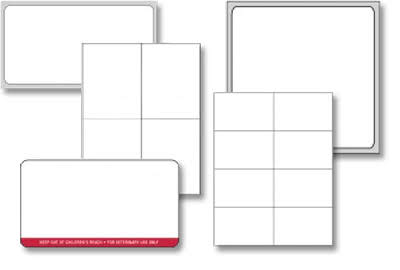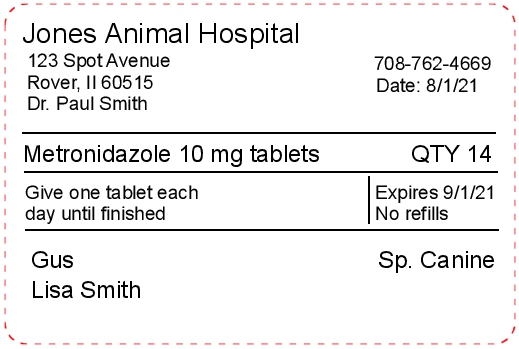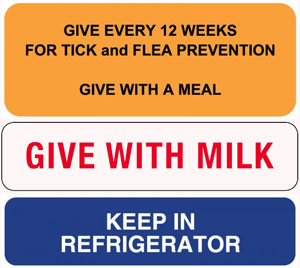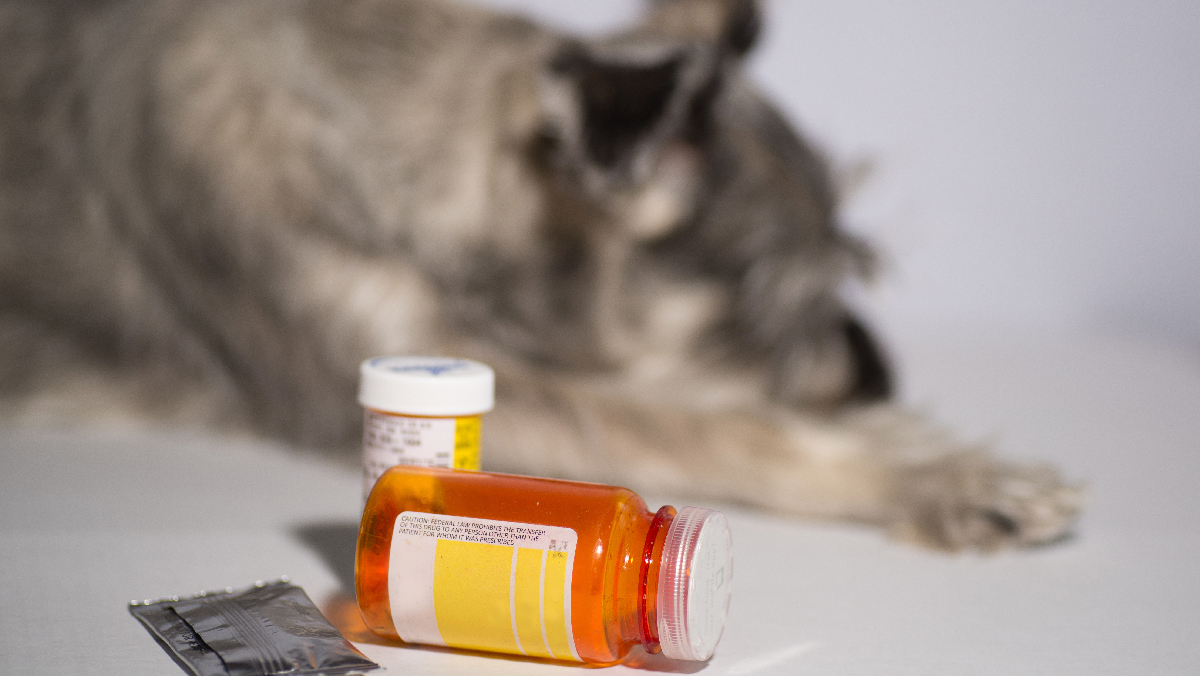For most of the 67% of U.S. households or nearly 85 million families that have pets, their health is a high priority. And beyond regular check-ups, vaccines and medications that treat the common ailments their pet may confront, pet care often includes managing chronic conditions like arthritis and gum disease, especially with life spans increasing. This combination of factors contribute to the amount of medications pet owners purchase each year. In fact, in a 2019 survey among dog and cat owners who had taken their pet to the veterinarian in the past 12 months, 78% of dog owners and 62% of cat owners purchased pet medications. In addition, over 60% spent more than $100. Unfortunately, as the amount of medications dispensed increases, so do medication errors. This makes effective communication, starting with the veterinary prescription labels, even more important.
Veterinary Prescription Label Requirements
In a study conducted by the college of veterinary medicine at Cornell University, at their three small animal, large animal and specialty hospitals, they found 560 cases of medical errors, 15% which resulted in harm and 8% resulted in permanent harm or death.
Medication errors were the most common.
The fact is, medication errors occur for various reasons. And regardless of whether a doctor or technician performs the dispensing, it’s confusion from similar drug names and using abbreviations and acronyms instead of the actual drug names that caused the most mistakes.
In addition, errors also occur when the client dispenses medications at home. Unusual dosage requirements, medications that need to be taken with or without food and at a certain time of day can all lead to potential mix-ups. And using various forms of communication, directed at both the provider and the patient, starting with the prescription label itself minimizes medication errors.
 The Parts Of A Veterinary Prescription Label
The Parts Of A Veterinary Prescription Label
The first step to minimize veterinary medication errors is to ensure the prescription label contains the necessary information that corresponds with the medication in the prescription bottle.
Although the size of a veterinary prescription label is small, approximately 2” x 3”, the information the FDA requires is extensive. Whether the information is preprinted or computer generated, the label should contain seven distinct categories ranging from the veterinary practice name and contact info to directions on how to use the medication.
 A Sample Label For Veterinary Prescription Drugs
A Sample Label For Veterinary Prescription Drugs
This sample label for veterinary prescription drugs shows a best practice example of the required fields, type sizes and warnings that are most effective.
What Is Required On A Veterinary Prescription Label
As shown in the above example, the actual container must include the following information:
- The name of the veterinary practice, its address, and contact information
- The veterinarian's name, the patient's name and species, and the client's last name
- The date of the prescription and the expiration date of the medication
- The total amount (or quantity) of medication being dispensed If any refills are authorized
- The name of the medication (active ingredient) and its strength
- Directions on how to use the medication and cautions/precautions
This information may be on the veterinary label applied by the manufacturer, or on a label attached to the product by the veterinarian.
The FDA Drug Labeling Minimum Font Size
It’s true that factors other than type size can enhance readability. Plus, as noted above, the amount of information required on the label influences the possible type size. As a result, the FDA requires a minimum type size of 6 point.
But, Consumer Reports found in their research that the label is more effective when:
- Using an easy-to-read 12-point type, with the patient's name, drug name, and drug instructions in the largest letters.
- Printing warnings directly onto patient labels in a large typeface. Warnings that appear on the labels that are typed in very small type can be hard to read or hard to find.
- The pharmacy's information—name, address, and phone number— appear at the bottom of the label, so the patient's drug information is prominently displayed at the top for easy reading.
What Is Not Required On A Veterinary Prescription Label
Although these conditions are not required on veterinary prescription label, the FDA does recommend the following:
- Minimize the use of medical abbreviations. Although they may save time, abbreviations are a common driver of veterinary medication errors.
- Eliminate the use of leading and trailing zeros. Eliminating extra zeroes (like 5.0 mg) helps prevent pet owners from dispensing 5 mg of a medication incorrectly remembering it as "50 mg.”
- When calling in or writing out a human drug prescription for animals, verbally state or write out the entire prescription because some pharmacists may be unfamiliar with veterinary abbreviations.
Veterinary Prescription Labels At United Ad Label
Effectively designed veterinary prescription labels help the veterinary staff dispense medications safely and accurately. Plus, they also assist pet owners, communicating proper storage and care giving, once the pet is at home. United Ad Label works with veterinary practices and animal hospitals to provide effective veterinary label solutions.
